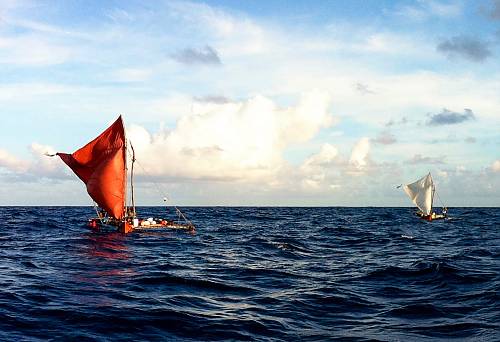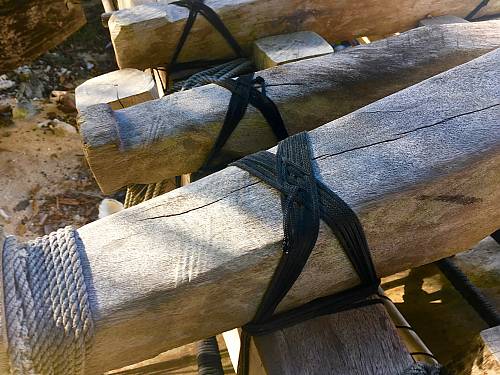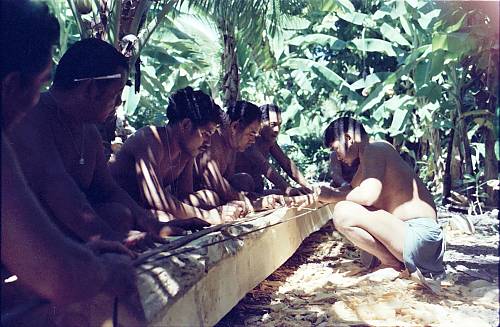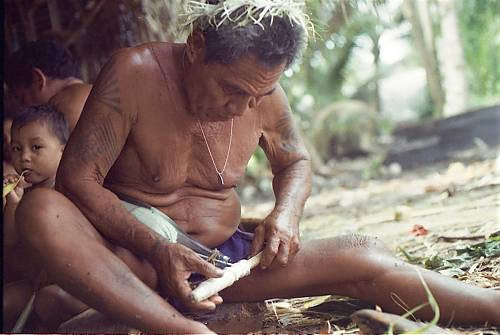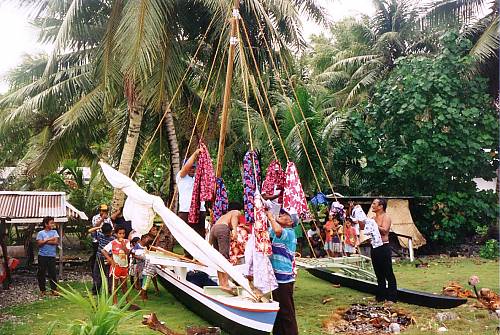Carolinian wayfinding and canoe making
Micronesia (Federated States of)
Inscribed in 2021 (16.COM) on the List of Intangible Cultural Heritage in Need of Urgent Safeguarding
Carolinian wayfinding and canoe making refers to the centuries-old tradition of building and navigating long-distance canoes. Communities in Micronesia, and particularly in the outer islands of Yap State, continue the traditions of building the ocean- voyaging sailing canoes from local materials and of navigating, or wayfinding, without maps or instruments. The entire community participates in the construction of the canoe, which begins with the selection and felling of a tree and involves a detailed measurement system based on an indigenous mathematical tradition that is both accurate and verifiable. The carving is done almost exclusively with the indigenous adze. The asymmetrical design supports high-speed sailing and allows access to shallow water. Traditional wayfinders use environmental cues, including atmospheric phenomena, to navigate. Although they have been lost in most Pacific nations, these wayfinding and canoe-making traditions and technologies enabled the settlement of thousands of islands in the Pacific Ocean. The practice is passed on through traditional apprenticeships led by master canoe carvers and navigators. Today, only a limited number of navigators and canoe carvers remain, with few opportunities to pass on the knowledge and skills due to the reduced size of nuclear families and migration to high islands. The element is also threatened by faster transportation alternatives and environmental degradation.


